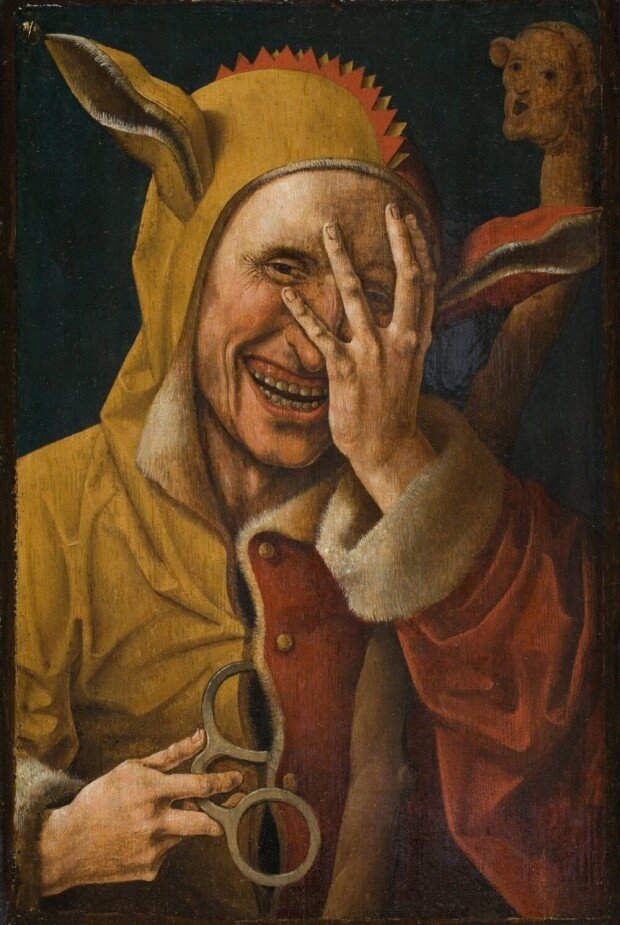Laughing like fools
Laughing like fools
Posted February. 08, 2024 07:32,
Updated February. 08, 2024 07:32

A man in a hooded top with donkey ears is smiling widely, showing his teeth. His left hand is used to cover half of his face, and he holds a pair of glasses on his right hand. The man in a mustard and red clothing is holding a cane with a face-like shape on the left arm, and his hood has a dinosaur-like protrusion. Who is this oddly dressed man and why is he laughing like this?
The title of this painting is “Laughing Fool” (around 1,500, picture). Though it is not signed, it is known to have been created by 15th-century Dutch painter Jacob Cornelisz. The title suggests that he might have painted someone who is mentally impaired, but his attire is of a clown. It is a clown acting foolishly to make people laugh. The wooden cane on his left arm is a prop cane called “Marotte,” with the head of a fool carved on the top, possibly created to make people laugh, wielding it through the air, tapping on the bottom to gain attention, or poking others. The glasses on his right are used as props, as they don’t have any lenses.
What attracts the most attention is his hand and laughter. Generally, people cover their faces with hands if they are overly surprised, terrified, or embarrassed. They may peek between their fingers. However, the clown has half of his face hidden, staring at the front as he laughs.
There is a Dutch saying that goes, “peeping between fingers,” which refers to allowing things that are generally not allowed or pretending not to notice. Perhaps the laughter of the man is a self-deprecating one that pretends not to see the paradox and absurdity of the world.
The laughter of a fool also symbolizes the vanity of life. Laughing in vain, which is like trying to stay on balance between happiness and sadness, reminds us that the pursuit of worldly desires is futile. I believe the painter is trying to tell us that anger, sadness, and despair will pass if we laugh aloud like fools.







